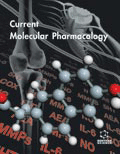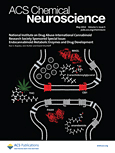
NEUROMOLECULAR MEDICINE
Scope & Guideline
Pioneering Research in Cellular Neuroscience and Medicine
Introduction
Aims and Scopes
- Molecular Mechanisms of Neurological Disorders:
Research addressing the cellular and molecular pathways involved in various neurological conditions, including neurodegeneration, neuroinflammation, and brain injury. - Therapeutic Interventions and Drug Development:
Studies that explore new therapeutic strategies, drug mechanisms, and potential treatments for neurological diseases, emphasizing translational research. - Neuroinflammation and Immune Response:
Investigations into the role of the immune system and neuroinflammatory processes in the pathogenesis of neurological disorders. - Neurogenetics and Epigenetics:
Research focused on genetic and epigenetic factors contributing to brain disorders, including polymorphisms, mutations, and gene expression alterations. - Neuroprotection and Regeneration:
Explorations of neuroprotective substances and strategies that promote recovery and regeneration in neuronal tissues following injury or degeneration. - Microbiome-Gut-Brain Axis:
Studies exploring the impact of gut microbiota on neurological health and disease, emphasizing the bidirectional communication between the gut and the brain.
Trending and Emerging
- Single-Cell Sequencing and Machine Learning:
The integration of advanced technologies like single-cell sequencing and machine learning algorithms for studying complex neurological conditions is gaining traction, allowing for more precise insights into cellular heterogeneity. - Neuroinflammation and Cytokine Signaling:
Increased focus on the role of neuroinflammation and signaling pathways involving cytokines in various neurological disorders indicates a growing recognition of their significance in disease progression. - Role of the Gut Microbiome in Neurological Health:
Research exploring the gut-brain axis and the influence of gut microbiota on brain function and disease is becoming increasingly prominent, reflecting a multidisciplinary approach to understanding neurological conditions. - Epigenetic Modifications in Brain Disorders:
The exploration of epigenetic changes and their implications for neurodevelopment and neurodegeneration is on the rise, suggesting a deeper understanding of how environmental factors can influence brain health. - Novel Biomarkers for Diagnosis and Prognosis:
There is a trend towards identifying new biomarkers for early diagnosis and prognostic evaluation in neurological disorders, facilitating timely interventions and personalized treatment strategies.
Declining or Waning
- Basic Neuroscience Mechanisms:
Research that delves into fundamental neuroscience processes, such as neuronal signaling and synaptic function, appears less frequently, possibly overshadowed by more applied studies. - Animal Models of Neurological Disorders:
While animal studies remain crucial, there seems to be a decline in publications solely focused on traditional animal models, as there is a growing emphasis on translational and human-relevant research. - Pharmacological Studies of Established Drugs:
Investigations centered around well-known pharmacological agents are decreasing, potentially due to a pivot towards novel therapeutic approaches and personalized medicine.
Similar Journals

Discovery Medicine
Elevating the standards of discovery in medicine.Discovery Medicine, an esteemed journal published by Discovery Medicine, serves as a vital platform within the field of general medicine, dedicated to advancing knowledge through high-quality research and innovative insights. With its ISSN 1539-6509 and E-ISSN 1944-7930, this journal boasts an impressive Scopus ranking of #29 out of 529 in the general medicine category, positioning it at the 94th percentile, indicating its significant contribution to the medical sciences. While operating as a subscription-based journal, Discovery Medicine fosters an environment where researchers and professionals can disseminate their findings and engage with cutting-edge developments in medicine. Spanning topics that bridge clinical practice and healthcare advancements, this journal aims to inform, challenge, and inspire the medical community. The journal has converged its volumes from 2006 to 2007 and again from 2009 to 2018, highlighting its sustained commitment to excellence even as coverage has temporarily discontinued in Scopus. Situated at 10 Gerard Ave, Ste 201, Timonium, MD 21093, Discovery Medicine continues to be a cornerstone for medical scholars, offering a rich repository of knowledge essential for ongoing research and practical applications.

FOLIA NEUROPATHOLOGICA
Unveiling critical insights in neuropathology.FOLIA NEUROPATHOLOGICA is a distinguished Open Access journal specializing in the fields of Neurology and Pathology, published by the reputable TERMEDIA PUBLISHING HOUSE LTD. With an ISSN of 1641-4640 and E-ISSN 1509-572X, this journal has been a vital resource for the dissemination of high-quality research since its inception in 1994. Covering a broad spectrum of topics within neuropathology, the journal emphasizes clinical findings and forensic implications, making it an essential platform for healthcare professionals, researchers, and students alike. With impressive impact factors positioning it in the Q3 category for both Neurology (clinical) and Pathology and Forensic Medicine, FOLIA NEUROPATHOLOGICA occupies a significant place among its peers, ranked within the 36th to 46th percentiles on Scopus. Scholars can benefit from the Open Access model implemented since 2005, ensuring wide accessibility and distribution of critical research outputs aimed at advancing both clinical practices and academic knowledge. Based in Poland, at KLEEBERGA 2, POZNAN 61-615, this journal continues to shape the discourse in neuropathology and related fields.

ACTA NEUROBIOLOGIAE EXPERIMENTALIS
Exploring the Depths of Neuroscience ResearchACTA NEUROBIOLOGIAE EXPERIMENTALIS, an esteemed journal published by the Nencki Institute of Experimental Biology in Poland, has been a pivotal platform for the dissemination of research in the fields of medicine and neuroscience since its inception in 1970. With an ISSN of 0065-1400 and an E-ISSN of 1689-0035, this journal has consistently aimed to contribute to the understanding of neurobiological phenomena, cementing its status within the academic community. Despite its current categorization in the Q3 and Q4 quartiles for Medicine and Neuroscience respectively, ACTA NEUROBIOLOGIAE EXPERIMENTALIS continues to uphold rigorous scientific standards, providing an invaluable resource for researchers, professionals, and students alike. As an essential scholarly outlet, it encourages the exploration of groundbreaking findings and clinical applications in neurobiology, making it an attractive choice for those eager to advance their understanding of this intricate field.

Current Molecular Pharmacology
Advancing the Frontiers of PharmacologyCurrent Molecular Pharmacology, published by Bentham Science Publishers, is a prominent journal focused on the dynamic fields of pharmacology, drug discovery, and molecular medicine. With an ISSN of 1874-4672 and an E-ISSN of 1874-4702, this journal aims to disseminate cutting-edge research and review articles that showcase innovative methodologies and groundbreaking findings from 2008 through 2024. Holding a respectable Q3 category ranking in Drug Discovery, Molecular Medicine, and Pharmacology for 2023, Current Molecular Pharmacology serves as an essential platform for both established researchers and emerging scholars to share their insights. The journal is indexed in Scopus with its relevant ranks catering to pharmacology and molecular biology, ensuring it reaches a wide array of professionals, researchers, and students in the field. As a contributor to advancing pharmacological sciences, this journal provides invaluable access to the latest advancements and fosters ongoing dialogue in molecular pharmacology, positioning itself as a key resource in the exploration of therapeutic agents and their interactions.

Journal of Neuroimmune Pharmacology
Elevating the Standards of Neuroimmune Pharmacological ResearchThe Journal of Neuroimmune Pharmacology, published by Springer, is a premier academic journal dedicated to advancing the field of pharmacology intersecting with neuroscience and immunology. With an outstanding impact factor and proudly positioned in the Q1 quartile across multiple categories, this journal showcases cutting-edge research that enhances our understanding of the neuroimmune system and its pharmacological implications. Established in 2006 and continuing through 2024, it serves as a vital resource for researchers, professionals, and students alike, offering insights into the mechanisms of drug action, disease processes, and therapeutic strategies. As a testament to its excellence, the journal ranks prominently in Scopus metrics within its discipline, making it an essential platform for disseminating high-quality research that drives innovation in immunology, allergy, neuroscience, and pharmacology.

MOLECULAR THERAPY
Advancing molecular medicine for a healthier tomorrow.MOLECULAR THERAPY, published by CELL PRESS, is a distinguished journal in the field of molecular biology and therapy, renowned for its significant contributions to drug discovery, genetics, and pharmacology since its inception in 2000. This prestigious journal, which holds a commendable position in the Q1 category across multiple disciplines including Drug Discovery, Molecular Medicine, and Molecular Biology, facilitates cutting-edge research and innovative therapies that aim to improve patient outcomes. With an impressive Scopus ranking that places it among the top journals in its field—such as rank #6 in Drug Discovery and #8 in Pharmacology—MOLECULAR THERAPY is crucial for researchers, professionals, and students seeking to advance their understanding and application of molecular techniques. The journal welcomes high-quality submissions that explore the therapeutic potential of molecular mechanisms, fostering a collaborative spirit within the scientific community to push the boundaries of modern medicine.

JOURNAL OF MOLECULAR MEDICINE-JMM
Transforming Research into Revolutionary Medical Solutions.JOURNAL OF MOLECULAR MEDICINE (JMM) is a premier publication dedicated to advancing the field of molecular medicine, encompassing critical areas such as drug discovery, genetics, and biochemistry. Published by Springer Heidelberg in Germany, this influential journal has established its significance within the academic community, achieving an impressive Q1 ranking across multiple categories as of 2023, including Drug Discovery, Clinical Genetics, and Molecular Medicine. With a focus on publishing high-quality research and novel insights, JMM appeals to a diverse audience of researchers, professionals, and students passionate about the molecular underpinnings of health and disease. The journal, which has seen a convergence of relevant research spanning from 1976 to 2024, is instrumental in showcasing groundbreaking studies that push the boundaries of knowledge in molecular therapeutics and biomedical science. While it does not offer open access, the rigor of its peer-reviewed content ensures that each publication is a valuable addition to the scientific discourse surrounding molecular medicine. For comprehensive studies and reviews that highlight the intersection of molecular biology and clinical application, look no further than JOURNAL OF MOLECULAR MEDICINE.

CELLULAR AND MOLECULAR NEUROBIOLOGY
Exploring the Nexus of Cell Biology and Neuroscience.CELLULAR AND MOLECULAR NEUROBIOLOGY, published by SPRINGER/PLENUM PUBLISHERS, stands as a significant contributor to the fields of cell biology and neuroscience, holding a distinguished position in the academic community with an impact factor that places it in the Q2 category for both Cell Biology and Cellular and Molecular Neuroscience, along with Q1 in Medicine (miscellaneous). Since its inception in 1981, this journal has provided a critical platform for innovative research and thought-provoking reviews, fostering a deeper understanding of complex neurobiological mechanisms. The journal’s rigorous peer-review process ensures the publication of high-quality manuscripts that offer valuable insights into cellular processes and neural functions. With a commitment to advancing knowledge and promoting collaboration among researchers, CELLULAR AND MOLECULAR NEUROBIOLOGY remains an essential resource for professionals and students alike, looking to stay updated on the latest developments in neurobiology.

Translational Neuroscience
Advancing Neuroscience Through Multidisciplinary Collaboration.Translational Neuroscience, published by DE GRUYTER POLAND SP Z O O, is a leading open-access journal since its inception in 2015, dedicated to the multidisciplinary exploration of neurological research and its clinical applications. With an ISSN of 2081-3856 and an E-ISSN of 2081-6936, the journal serves as a crucial platform for scholars and practitioners to disseminate innovative findings and theoretical advancements in the field of neuroscience. Covering various aspects of general neuroscience, it is ranked in the Q3 quartile for 2023 and positioned at Rank #75 out of 113 in its category, reflecting its growing impact within the scientific community. The journal strives to bridge the gap between laboratory research and clinical practice, fostering collaboration among researchers, clinicians, and educators. The editorial team is committed to maintaining high publication standards that engage the audience with rigorous research while promoting a culture of open science. For those interested in the forefront of neuroscience research, Translational Neuroscience offers an invaluable resource for knowledge and innovation.

ACS Chemical Neuroscience
Unraveling the Molecular Mysteries of Neural Function.ACS Chemical Neuroscience, published by the American Chemical Society, is a premier journal dedicated to exploring the complex interactions between chemistry and neuroscience. With its ISSN 1948-7193 and a distinguished impact factor that positions it within the top quartiles across multiple categories, including Q1 in Biochemistry, Q2 in Cell Biology, and Q1 in Physiology, this journal serves as an essential platform for researchers engaged in cutting-edge studies from 2010 to 2024. Positioned within the top 15% of its field in Cognitive Neuroscience according to Scopus rankings, ACS Chemical Neuroscience strives to foster interdisciplinary collaboration, publishing significant advancements that integrate chemical concepts with neurological processes. Despite its traditional publication model, the journal is committed to maintaining rigorous peer-review standards and providing valuable insights that drive innovations in therapeutics and understanding the biochemical underpinnings of brain function. Researchers, professionals, and students alike will find in this journal a vital resource for the latest findings and methodologies in the dynamic intersection of chemistry and neuroscience.